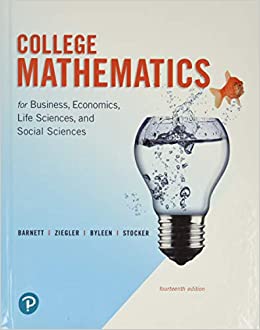A red urn contains 2 red marbles, 1 blue marble, and 1 green marble. A blue urn
Question:
A red urn contains 2 red marbles, 1 blue marble, and 1 green marble. A blue urn contains 1 red marble, 3 blue marbles, and 1 green marble. A green urn contains 6 red marbles, 3 blue marbles, and 1 green marble. A marble is selected from an urn, the color is noted, and the marble is returned to the urn from which it was drawn. The next marble is drawn from the urn whose color is the same as the marble just drawn. This is a Markov process with three states: draw from the red urn, draw from the blue urn, or draw from the green urn.
(A) Draw a transition diagram for this process.
(B) Write the transition matrix P.
(C) Determine whether this chain is regular, absorbing, or neither.
(D) Find the limiting matrix P̅, if it exists, and describe the long-run behavior of this process.
Step by Step Answer:

College Mathematics For Business Economics, Life Sciences, And Social Sciences
ISBN: 978-0134674148
14th Edition
Authors: Raymond Barnett, Michael Ziegler, Karl Byleen, Christopher Stocker





